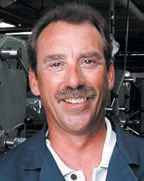Learning the language
Peter A. Oglevie | TLT Shop Floor 2011
To develop new products, you must translate requests from customers and co-workers.

The two skills I found most useful were listening and translating.
www.canstockphoto.com
I am a proud man and with good reason. My 23-year-old daughter Courtney graduated from college with a degree in Spanish over the holidays. She put in effort, used her intelligence and worked hard to achieve this honor. She had every right to strut across that stage and shake the chancellor’s hand. She earned it. The education system has produced a new product.
As she starts her career, she will learn this is only the first step in the learning process. She has an opportunity to go to Spain to hone her skills in teaching English as a teacher’s assistant. I have urged her to take the opportunity. It will give her experience in listening and translation. After she returns, she may become a bilingual customer service representative or a translator. The world is hers to explore.
I was lucky to have the opportunities during my career to help in the development of new products. This required me to work on the shop floor and with the laboratory to define product parameters. Like my daughter, the two skills I found most useful for managing these tasks were listening and translating.
The first skill, listening, is the most important. In order for my daughter to achieve her goal of earning a degree she had to listen to her professors and teachers. Like my daughter, I had to listen to the engineers and shop floor personnel when they defined a project.
I remember one area of new product development I could never overcome. I cannot count how many times a press-working customer asked for a lubricant that was easy to apply, did not affect part integrity, performed its operation and then magically disappeared after the operation was finished. I gave the same answer in every instance. If I had such a product, I would be a very wealthy man (it would easily have paid my daughter’s education).
I always asked the laboratory for this mythical but much in demand product and got the same answer from them every time: We do not have it. I set out to define what was possible with the technology Available to meet as much of the goal as possible.
For example, in press-working operations it’s a good bet the completed stamping will need a finish applied. For the finish to adhere, the lubricant must be removed. Thus the customer’s high-priority request for the phantom product. The correct translation for this request is that removing the lubricant takes a lot of time and energy.
So, if you cannot achieve the full goal, do you ignore what gains are possible? The answer is no.
In this case we learned that the customer’s washer system had to run at 160 F to remove lubricant. Could we, he asked, reduce the energy cost of running the washer? The answer to that question was yes.
For this application, you could reduce the washer temperature from 160 F to 130 F by using water-miscible products. I know of instances where this saving amounts to more than $50,000 annually.
One of the great life lessons I have learned is that nothing ever stays the same. I believe someday we tribologists will develop a product that applies easily, performs the operation, does not affect part integrity and, yes, magically disappears. However, if no one asks for the product, no one will work on finding the answer. That is why I relayed all phantom-product requests to our lab people. It was a friendly reminder of an industry goal.
Translation: Do what you can and keep trying on the rest. After all, it was not all that long ago that man could not fly, and Courtney was my little baby girl.
 Pete Oglevie is president of International Production Technologies in Port Washington, Wis. You can reach him at poglevie@wi.rr.com
Pete Oglevie is president of International Production Technologies in Port Washington, Wis. You can reach him at poglevie@wi.rr.com.